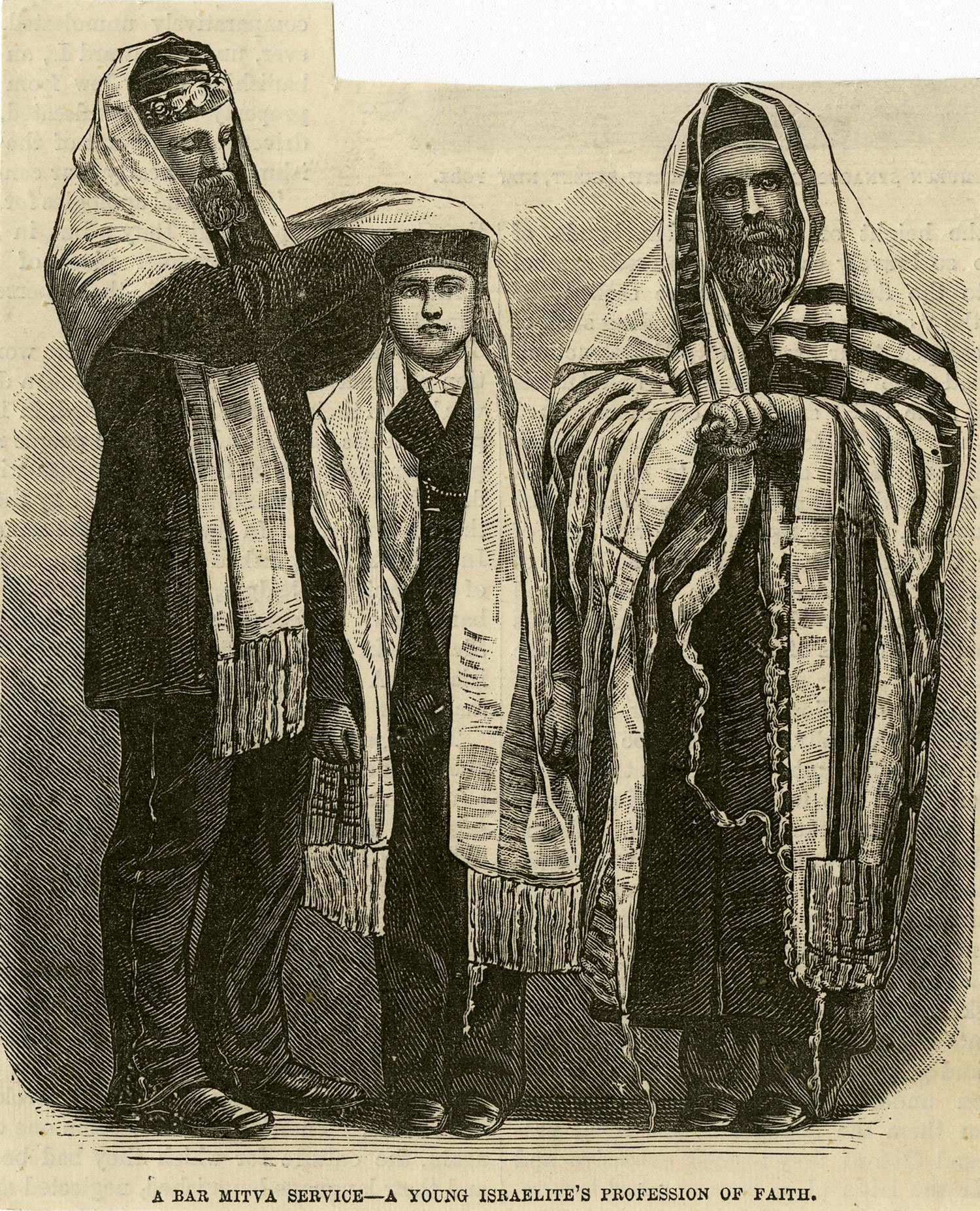The importance of the bar mitzvah has grown over the past few hundred years. Until the 20th century, however, it remained a simple ceremony. The boy was congratulated on his achievement, and his family might offer an assortment of sweets or a meal to the congregation. The boy might also give a speech, most likely about the Torah portion he read. In many congregations today, the event has taken on a much larger social meaning, providing one of the primary occasions for family gatherings and elaborate festivities. While the celebration of the bar mitzvah is an important marker of the occasion, a boy automatically becomes a bar mitzvah on his 13th birthday, whether or not a formal ceremony is held in the synagogue.
This image, published in the popular American press, emphasizes the sacred aspect of the bar mitzvah service in the synagogue, as a young boy is blessed by two men—probably his father and a rabbi. The term bar mitzvah means literally “son of the commandment,” so before a boy becomes a bar mitzvah, his parents are responsible for his adherence to the commandments of Judaism. Upon reaching the age of 13, however, the boy bears his own responsibility for adhering to the commandments. For this reason, during the ceremony, the boy’s father recites the blessing baruch she’p’tarani: “Blessed is He who has now freed me from the responsibility of this boy.” This blessing was used in Jewish tradition to mark the end of a father’s responsibility for his son’s education long before a formalized bar mitzvah ceremony was instituted.
